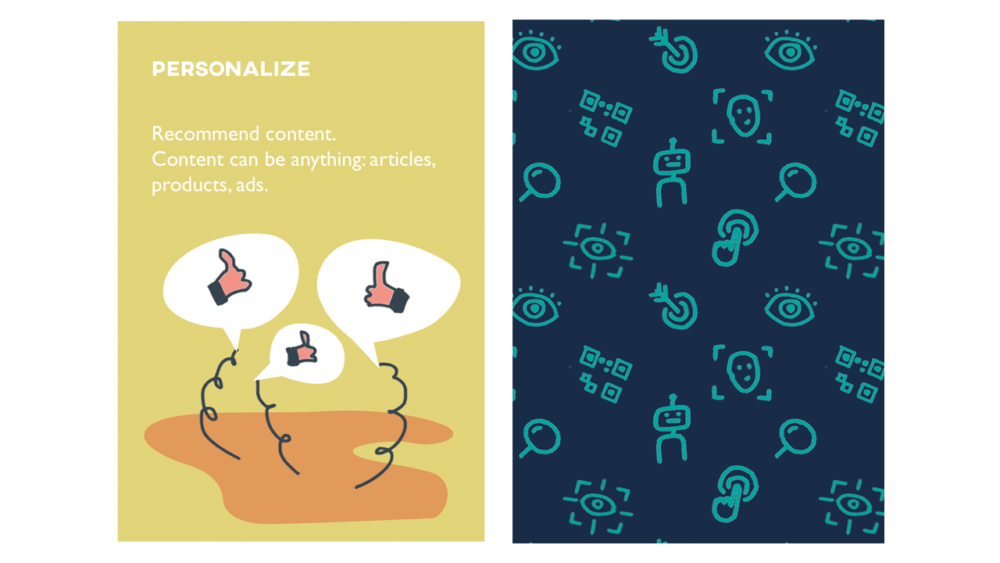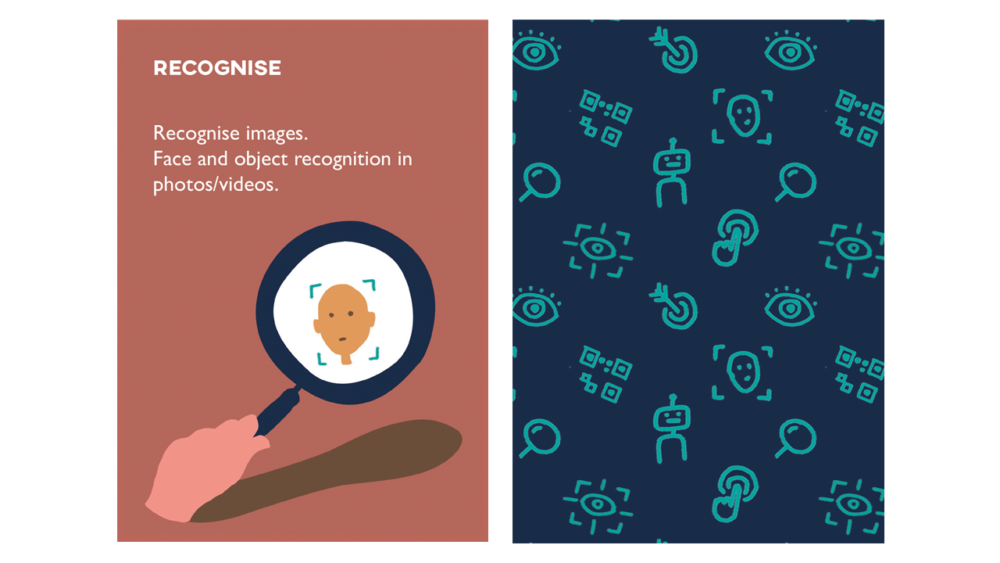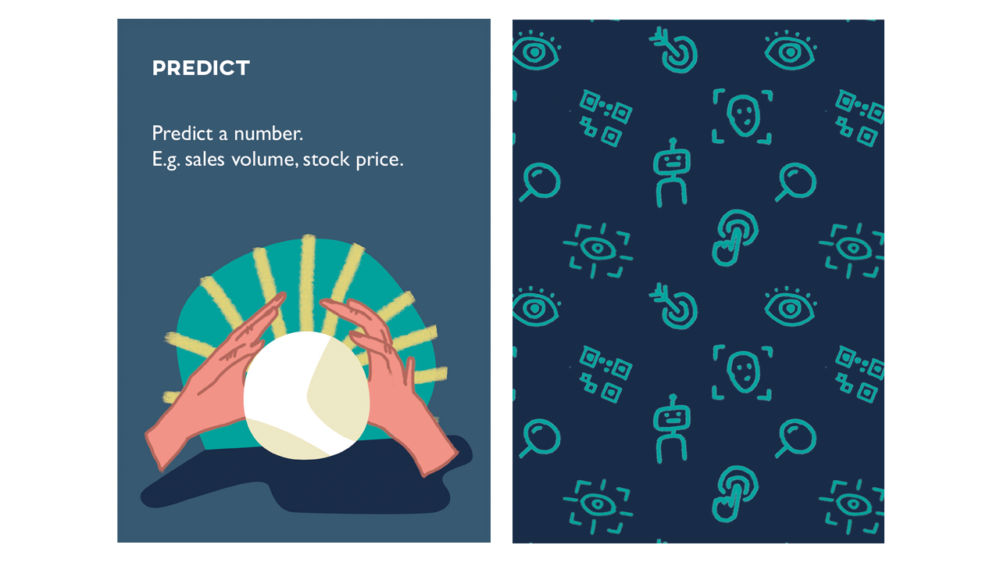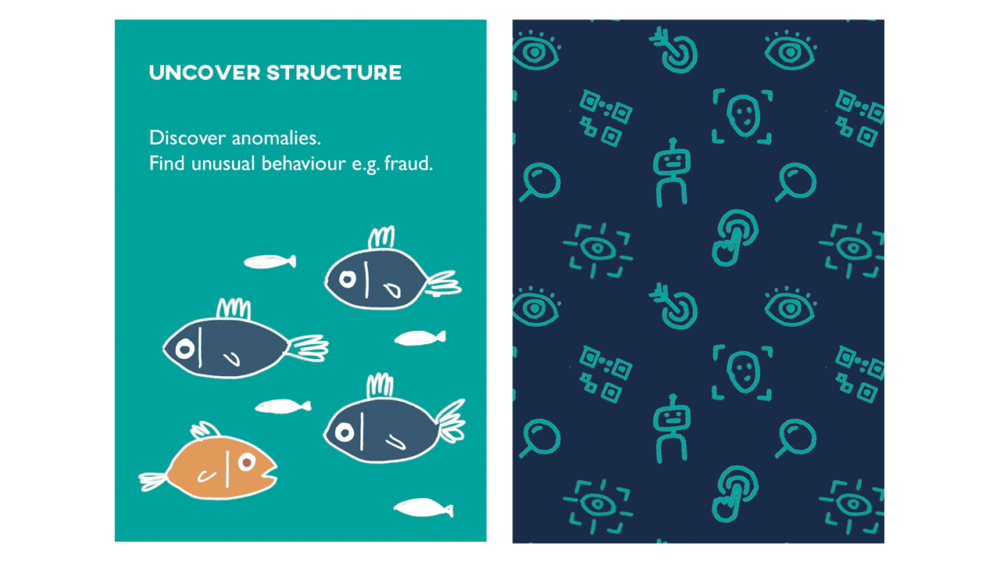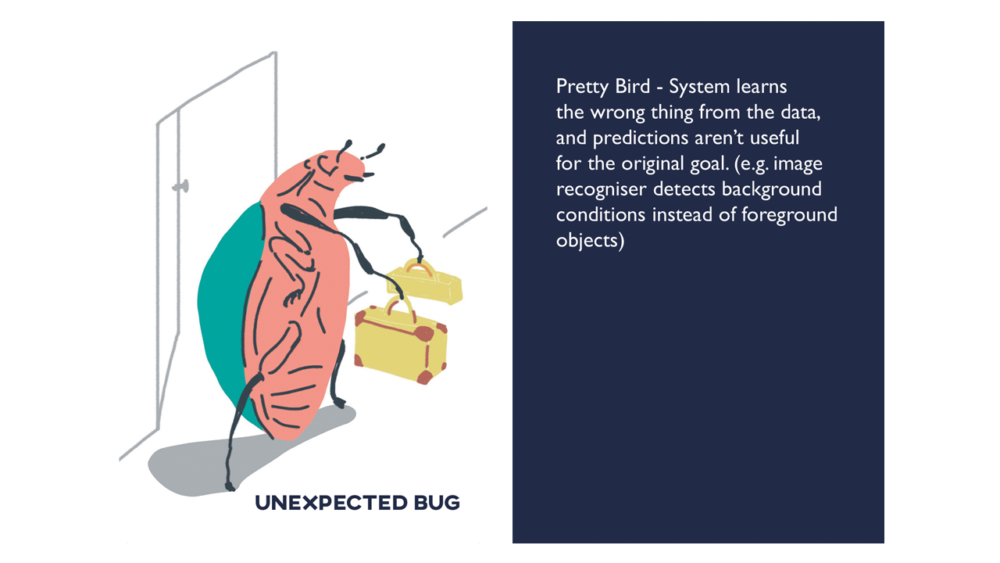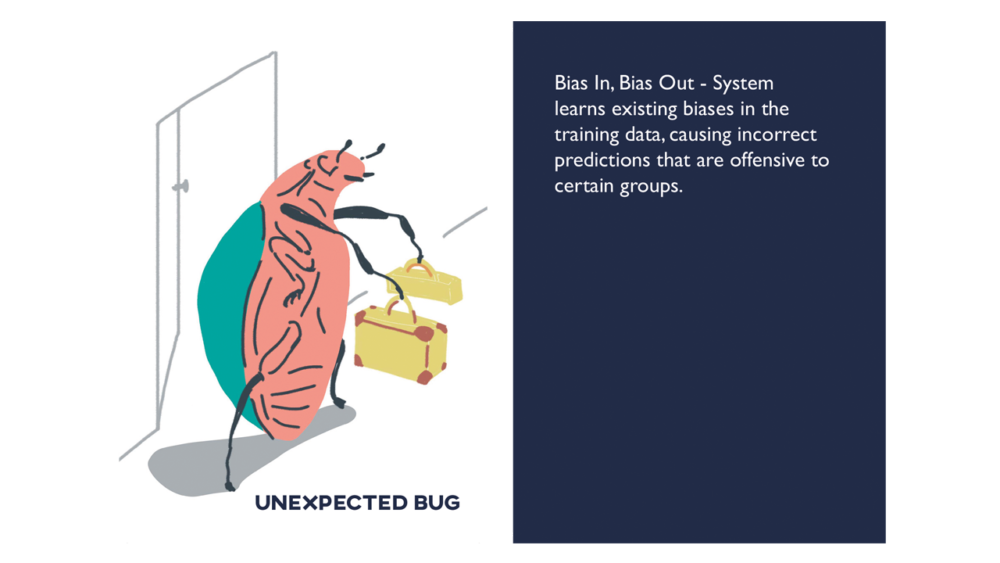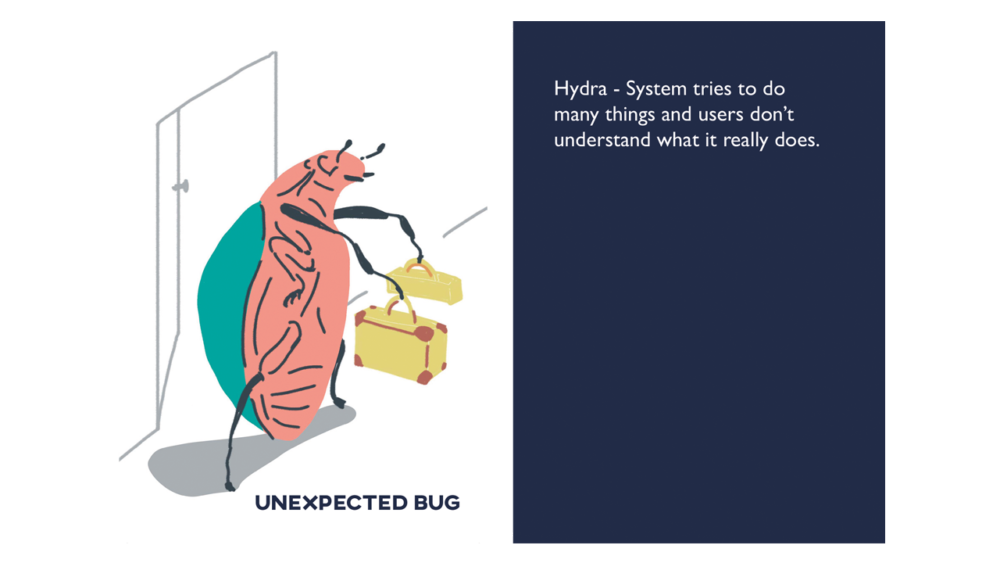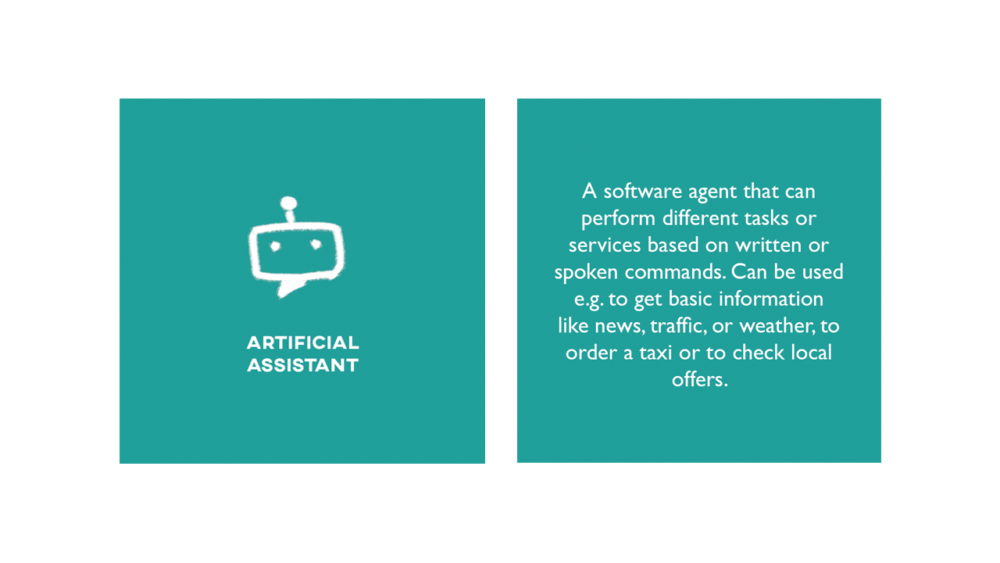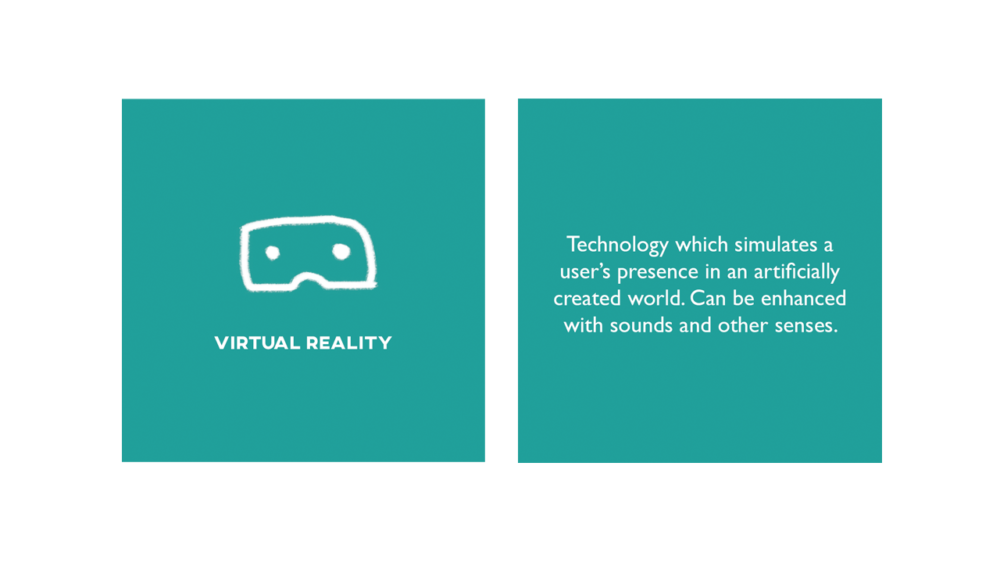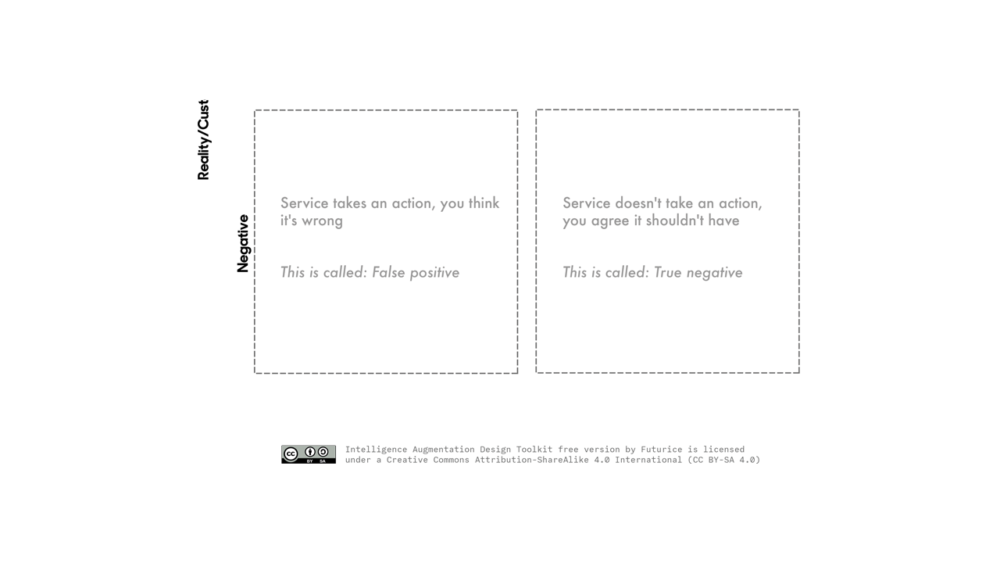Intelligence Augmentation design toolkit
Do you want to explore with your organisation if machine learning can mean something for you? Then the Intelligence Augmentation design toolkit might be for you.Futurice, an international digital engineering and consulting firm, developed the Intelligence Augmentation design toolkit in 2017. The toolkit helps design services/products with machine learning components. Thanks to the tool, you get answers to the following questions 'What does using such technologies mean for your business?', 'How does working with AI change your application in the design process?' and 'What can go wrong?'.
Do you want to explore the possibilities of machine learning as a company or as an organisation? Are you a designer and do you want to investigate the advantages and disadvantages of a machine learning component in a service/product? Then this tool can help you to conceptualise smart services, without the need for technical baggage.
Below, we provide more information about the toolkit and how best to use it in an internal workshop. Curious? Then keep reading.
For whom: everyone in companies who develop tech and set ethics strategy
Process phase: development of new tech or upgrading of existing tech
System component: entire system
Price indication: free
Method
Below, we provide a step-by-step guide to the best way to use the Intelligence Augmentation design toolkit. We will explain the different components of the toolkit.Before you start using the toolkit, please read the handbook that explains the use of the toolkit in detail. The handbook explains in detail what machine learning can do for your service/product. You will also find a handy glossary with some key terms such as algorithm, big data, artificial neural network, etc. This way, you can be sure that everyone is on the same wavelength during the game.
Once you have gone through the manual and are ready for the big work, you start with the customer segment cards. On these cards you describe the target group of the service/product you have in mind. Fill in the name, age and characteristics of the person on the card. We recommend filling in multiple profiles, and thus cards, so that the diversity of your target group is nicely presented. To do this in more detail, you can talk to the target group and find out if and how your service/product can be of added value to them.

Now that you have a clear idea of who you are designing the service/product for, you naturally want to map out how they are already fulfilling their needs. You do this by using a customer journey. The toolkit itself does not contain a customer journey, but online you can find many templates like this one from Service Design Tools. In the template, indicate which steps the target group needs to go through in order to realise their need. Also describe how they experience this process. This information is very useful to consider how your service/product can improve this process.
Then it's time to brainstorm about your service/product. Start from the customer journeys you created and see in groups how you can improve this process for your target group. Think about the following questions:
- How will your service/product improve the user experience?
- What pain points or barriers do you want to tackle?
- How will the target group interact with your service/product?
- Can machine learning add value to your service/product?
- How will your target group interact with your service/product?
- ... (for more questions, be sure to check out the handbook).
While doing this brainstorming exercise in group, you can make use of the other tools in the toolkit. You have machine learning interaction cards, which show what you can use machine learning for (predicting, personalising, recognising and identifying). Go through the customer journeys and see if a machine learning component can help predict, personalise, recognise and identify certain things.
The unexpected bug cards describe common errors when using machine learning. Whenever you add a machine learning component to your service/product design, pull up these cards and see how these errors might affect your service. Also think about how you can prevent and/or minimise these errors for your target audience.
Finally, you also have the touchpoint cards, which represent different - online and offline - channels (e.g. social media, customer service) to which a machine learning component can be added. Go back to the customer journey's and identify the moments when the target group interacts with your service/product. Once you have identified these moments, look at which channel your target group comes into contact with your service/product. Use the touchpoint cards. You can also add a touchpoint card yourself if you notice that a certain channel is missing!
The cards help you to focus certain questions during the brainstorm and to stimulate your creative thinking process. Besides the various cards, the toolkit also contains two canvases that you can use to document the entire design and brainstorming process.
Fill in the smart service storyline canvas to structure your smart service/product idea. In doing so, you document the key insights about the service/product. You have space to write down the following:
- The design of your smart service/product
- Why is your smart service/product needed by (1) your target group and (2) the service provider (your organisation)?
- Through which touchpoints does the target group come into contact with your service/product? And you, as an organisation, with the target group?
- Can machine learning add value to optimise the interaction process with your service/product for your target group? Can machine learning add value for you, as an organisation, to optimise the interaction process with your target group?
- Can you identify learning loops? For example: an algorithm makes predictions on the basis of data. These predictions create an effect in the target group, which causes the target group to take a certain action. That action again creates a lot of data, which can be used to further feed the algorithm. Check whether you can make use of learning loops in your smart service/product.
- For transparency and discoverability, you can describe to what extent the service/product must be explainable, who must have access to it and for how long, how you will ensure that anonymity is guaranteed, etc.
- Finally, you can also document which possible errors and prejudices your service/product can generate and which strategies you can use to eliminate these errors and prejudices.
The confusion matrix can be used as a tool to facilitate communication between service/product designers and data scientists. The matrix helps you to estimate the impact of an error or bias on your target group. You compare the possible decisions that machine learning will make with the consequences in the real situation. In this way you map the consequences of a mistake or bias for your target group and you can devise strategies to eliminate it. For example: a fraud detection system indicates that transaction X is fraudulent or not. In these cases, no error occurs: you agree that the system labeled the transaction as fraudulent, you agree that the system did not label the transaction as fraudulent. But in the following cases an error occurs: the system indicates that the transaction is not fraudulent but you think it is, or the system indicates that the transaction is fraudulent but you think it is not. In the latter two cases, the system makes the wrong decision. Once you have filled in the matrix for your service/product, try to answer these questions: 'How will the target group react to the four cases?', 'How will they react to the various errors?', 'If an error happens, what are the consequences for the target group?'.
Important info before you brainstorm
We recommend to plan at least half a day for this workshop. Designers are the main participants of this workshop, but it is useful to also invite various actors who are involved in the design process of a new service/product. The more you can look at the design of the smart service/product from different perspectives, the better you can anticipate possible barriers and shortcomings. Provide a group of at least 8 people (without facilitators) so that brainstorming can be done in smaller groups.
Organise the workshop in a room where there is enough space for a plenary table and tables for the smaller groups. It can be very useful to print the canvases in a large format so that everyone can read them easily. You can always work with post-it notes so that you can update the information on the canvases as the brainstorming exercise progresses.
Conclusion
Do you want to explore the possibilities of machine learning and check the pros and cons of a machine learning component in a service/product? Then this toolkit is for you. The toolkit is completely free and can be downloaded from the Futurice website.
Looking for a different tool? Check out our tools page where we collect tools we have designed ourselves and tools provided by other organisations. Use the handy filters to find a tool that suits your needs.
Links
Go to the tool and discover the cards and templates
https://futurice.com/ia-design-kitThis tool was not developed by the Knowledge Centre Data & Society. We describe the tool on our website because it can help you deal with ethical, legal or social aspects of AI applications. The Knowledge Centre is not responsible for the quality of the tool.
